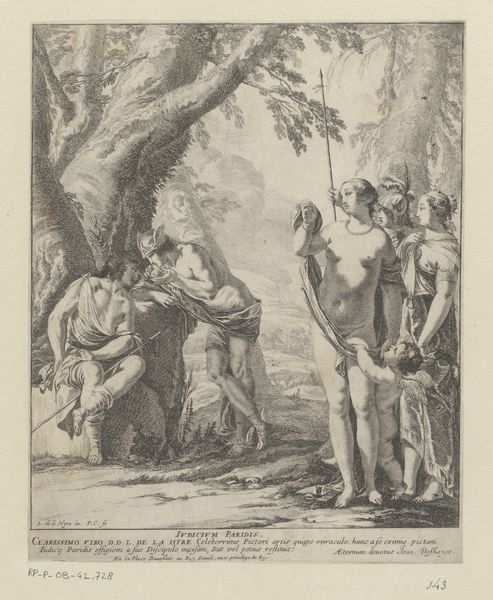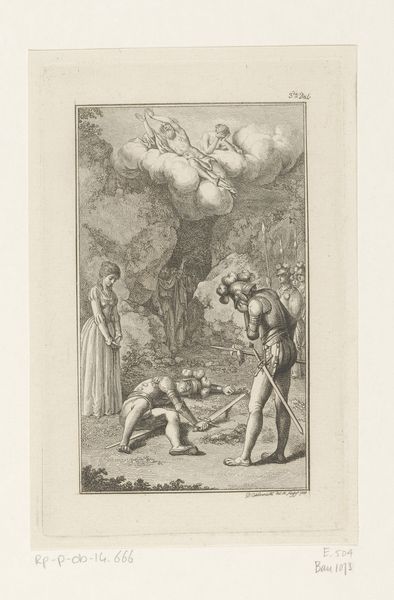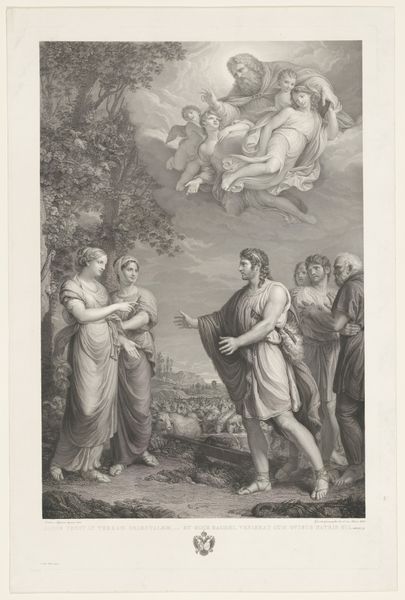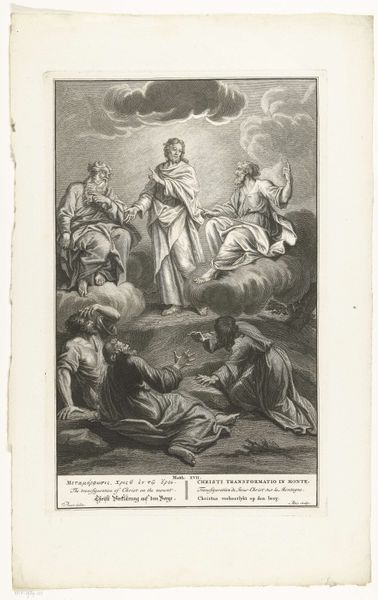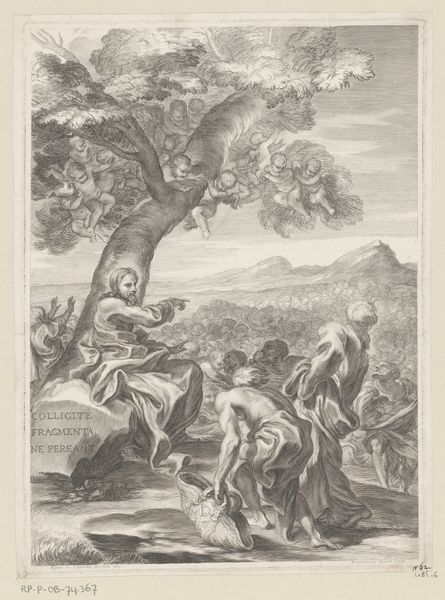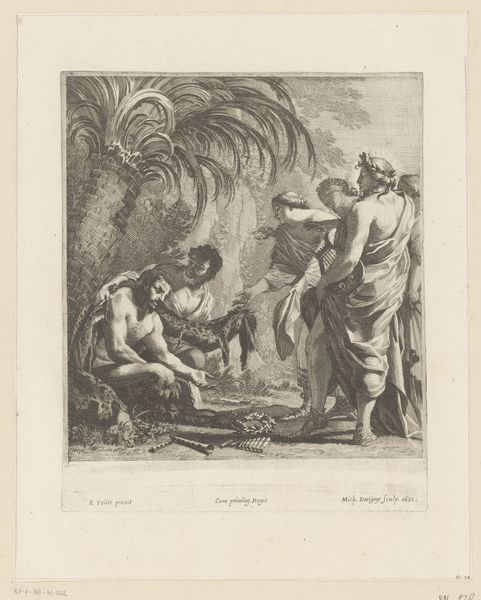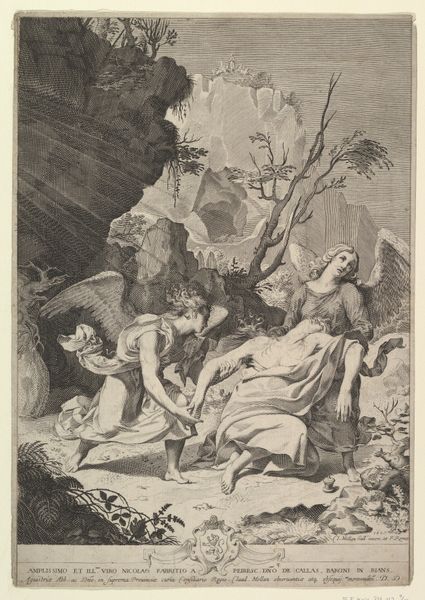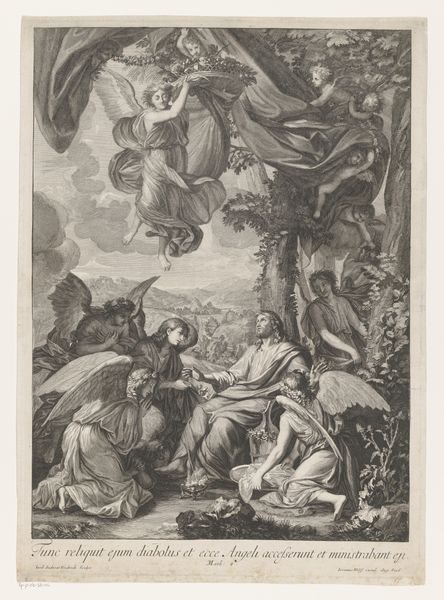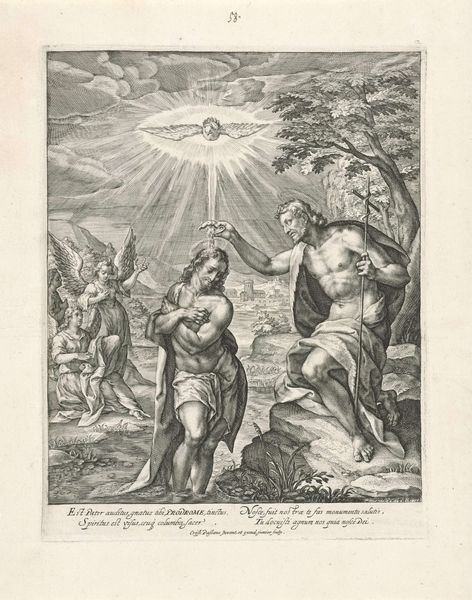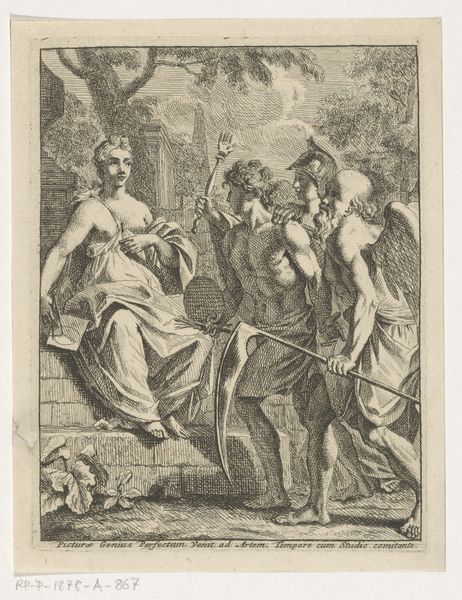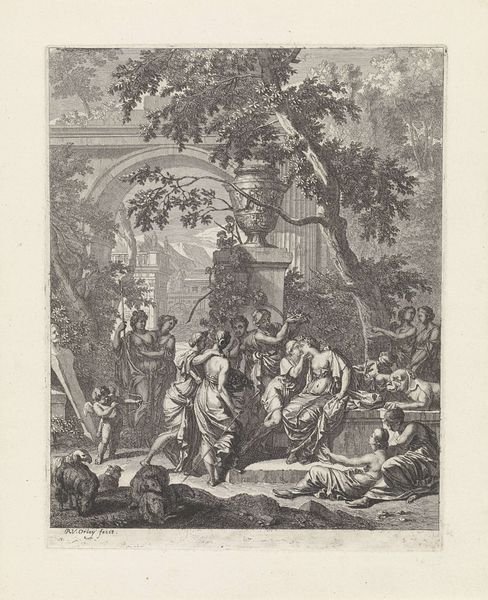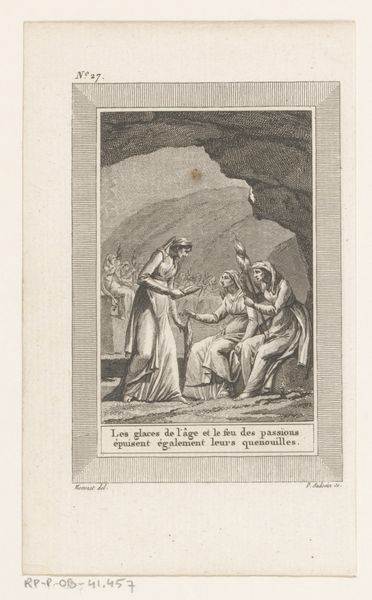
print, engraving
# print
#
old engraving style
#
landscape
#
mannerism
#
figuration
#
history-painting
#
engraving
Dimensions: height 273 mm, width 196 mm
Copyright: Rijks Museum: Open Domain
Curator: Lucas Kilian's engraving, "Baptism of Christ," made between 1589 and 1615, depicts a well-known biblical scene with a dramatic flair typical of Mannerism. It's currently housed at the Rijksmuseum. Editor: It’s pretty intense, almost theatrical. All those figures, the light bursting from the sky—it's trying to convey something very powerful. The line work looks incredibly meticulous, all those little etched lines building form. Curator: Right, engraving allows for that level of detail. Kilian, as a printmaker, was instrumental in disseminating images and ideas across Europe. Consider the context: prints like this democratized art, bringing religious narratives into homes beyond the wealthy elite. Editor: I’m drawn to the labour of it, actually. Can you imagine how long it must have taken to incise this plate? And what kind of tools? Also, think about the paper itself. Where was it produced? Who was making it, and how does that shape the value we place on this artwork now? Curator: Those are important questions! We also need to consider the iconographic choices, rooted in tradition but adapted for the late 16th-century audience. Note the theatrical gestures, typical of the Mannerist style, aimed to evoke a strong emotional response. And landscapes themselves as vehicles of symbolical language… Editor: Landscapes, even idealized ones, required immense technical skills and specific types of knowledge in copperplate production at the time, requiring mastery of chemistry for the etching, as well as strong social dynamics in order to gain credibility for selling religious subjects within wider art circles. Curator: Precisely, it underscores the artist’s ambition, also it invites viewers to not just observe, but also participate emotionally in the scene, connecting them directly with religious doctrine of the time. Editor: The mass production aspect can feel detached from this now, seeing it framed here. Curator: Perhaps. But remembering that original intent, its role in shaping faith and collective memory, it becomes profoundly impactful again. Editor: Indeed. Reflecting on the materials and production behind the print, the engraving reminds me about the long labor which allows art pieces such as the Baptism of Christ to have cultural meanings within given time and space. Curator: And for me, appreciating Kilian’s position, mediating faith through art in a rapidly changing world, that makes this piece deeply resonant even now.
Comments
No comments
Be the first to comment and join the conversation on the ultimate creative platform.
